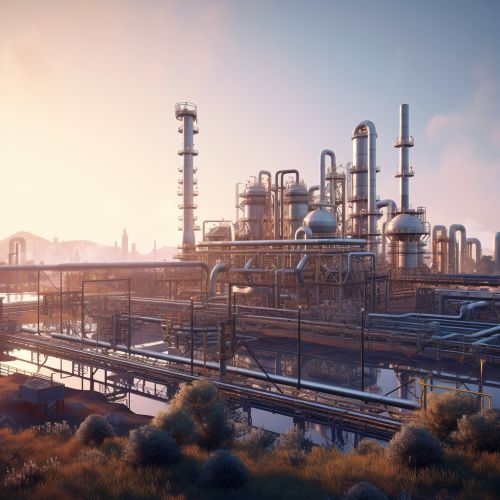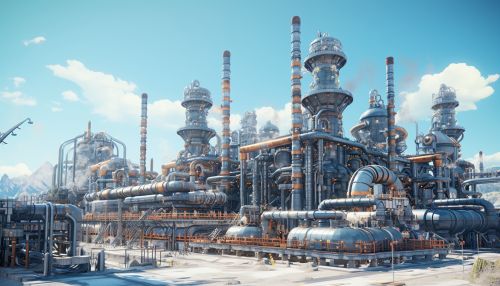Gasification
Introduction
Gasification is a process that converts organic or fossil fuel-based carbonaceous materials into carbon monoxide, hydrogen and carbon dioxide. This is achieved by reacting the material at high temperatures (>700 °C), without combustion, with a controlled amount of oxygen and/or steam. The resulting gas mixture is called syngas or producer gas and is itself a fuel. The power derived from gasification and combustion of the resultant gas is considered to be a source of renewable energy if the gasified compounds were obtained from biomass.


History
While gasification technology has been in practice for over two centuries, its widespread commercial use is relatively recent. The first attempts to gasify fuel were made in the 18th century, using wood and peat to produce 'town gas' for lighting and cooking.
Process
The gasification process is complex and involves several simultaneous and sequential physical and chemical reactions. These reactions occur within the gasifier, which typically operates at temperatures above 800 degrees Celsius.
Feedstock Preparation
The feedstock, which can be virtually any organic material, is prepared for gasification. This preparation can involve drying, grinding, and/or pelletizing the feedstock.
Gasification Reactions
The gasification reactions are endothermic and require heat to proceed. Therefore, the gasifier is typically a high-temperature environment. The primary reactions include:
- Drying: As the feedstock enters the gasifier, any water it contains is vaporized and driven off as steam.
- Pyrolysis: The dried feedstock then undergoes pyrolysis, where it is heated in the absence of oxygen. This process produces a mixture of solids (char), liquids (tar), and gases.
- Combustion: A portion of the char and tar undergoes combustion with oxygen to produce carbon dioxide and water vapor. This reaction is exothermic and provides the heat necessary for the other reactions to occur.
- Gasification: The remaining char and tar react with steam or carbon dioxide to produce carbon monoxide and hydrogen.
Types of Gasifiers
There are several types of gasifiers, each with their own advantages and disadvantages. The most common types include:
- Fixed Bed Gasifiers: These are the simplest and most common type of gasifier. They are typically used for small-scale applications and can handle a wide range of feedstocks.
- Fluidized Bed Gasifiers: These gasifiers are more complex but offer better temperature control and higher efficiencies. They are typically used for larger-scale applications and require a more uniform feedstock.
- Entrained Flow Gasifiers: These are the most complex type of gasifier and are typically used for large-scale, industrial applications. They offer the highest efficiencies but require a very uniform and finely ground feedstock.
Applications
Gasification has a wide range of applications, from small-scale power generation to large-scale industrial processes. Some of the most common applications include:
- Power Generation: Gasification can be used to generate electricity in a more environmentally friendly manner than traditional coal-fired power plants.
- Chemical Production: The syngas produced by gasification can be used to produce a variety of chemicals, including methanol, ammonia, and hydrogen.
- Liquid Fuels: Gasification can also be used to produce liquid fuels, such as diesel and gasoline, from biomass or coal.
- Waste Disposal: Gasification can be used to dispose of a variety of wastes, including municipal solid waste, industrial waste, and hazardous waste.
Environmental Impact
Gasification has the potential to be a more environmentally friendly process than traditional combustion. It can convert a wide range of feedstocks, including waste materials, into useful energy and chemicals. Furthermore, the process can be designed to capture and sequester carbon dioxide, helping to mitigate the impacts of climate change.
However, gasification also has potential environmental drawbacks. The process can produce a variety of pollutants, including particulate matter, sulfur compounds, and nitrogen oxides. Therefore, proper design and operation of the gasification plant are essential to minimize these emissions.
Future of Gasification
The future of gasification looks promising, with ongoing research and development aimed at improving the efficiency and environmental performance of the process. Advances in gasifier design, feedstock preparation, and syngas cleanup are expected to make gasification an increasingly important part of the global energy mix.
